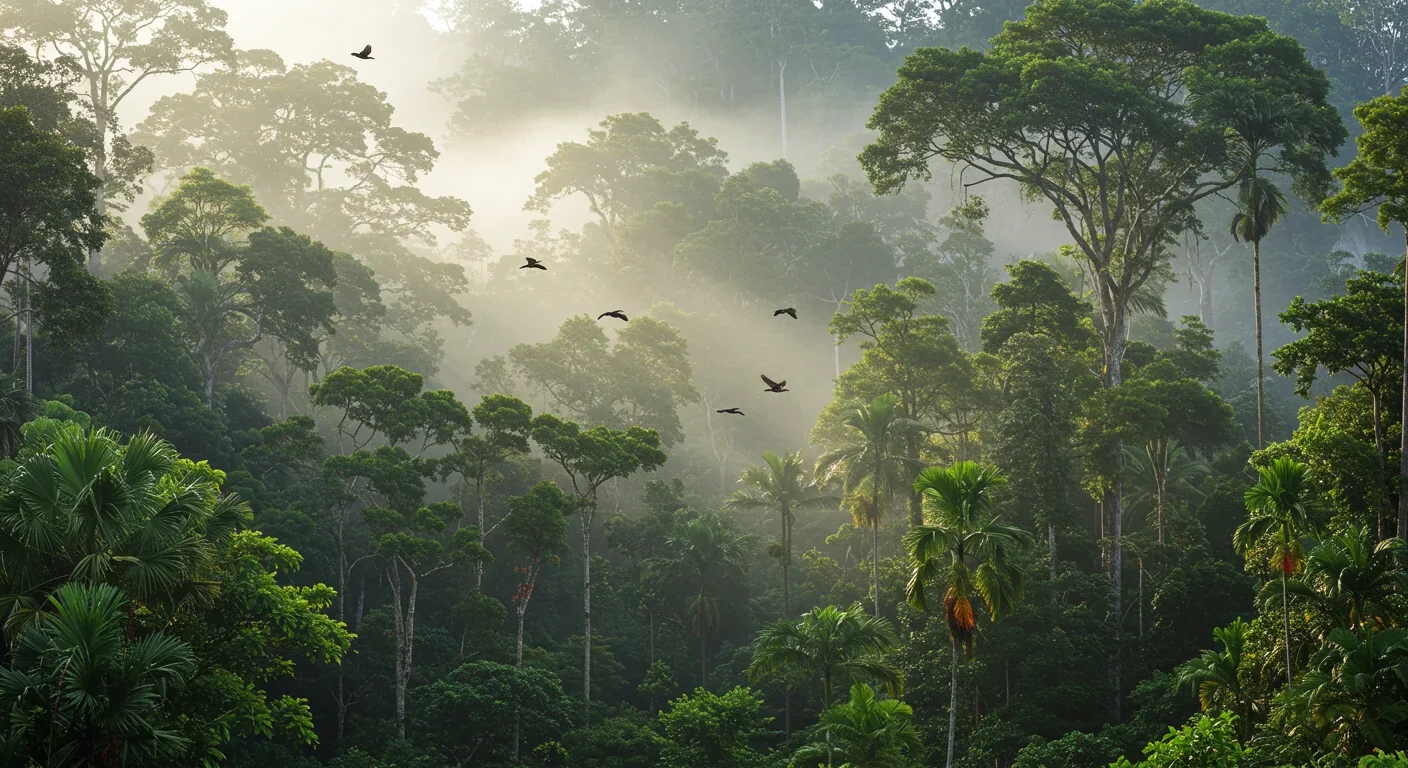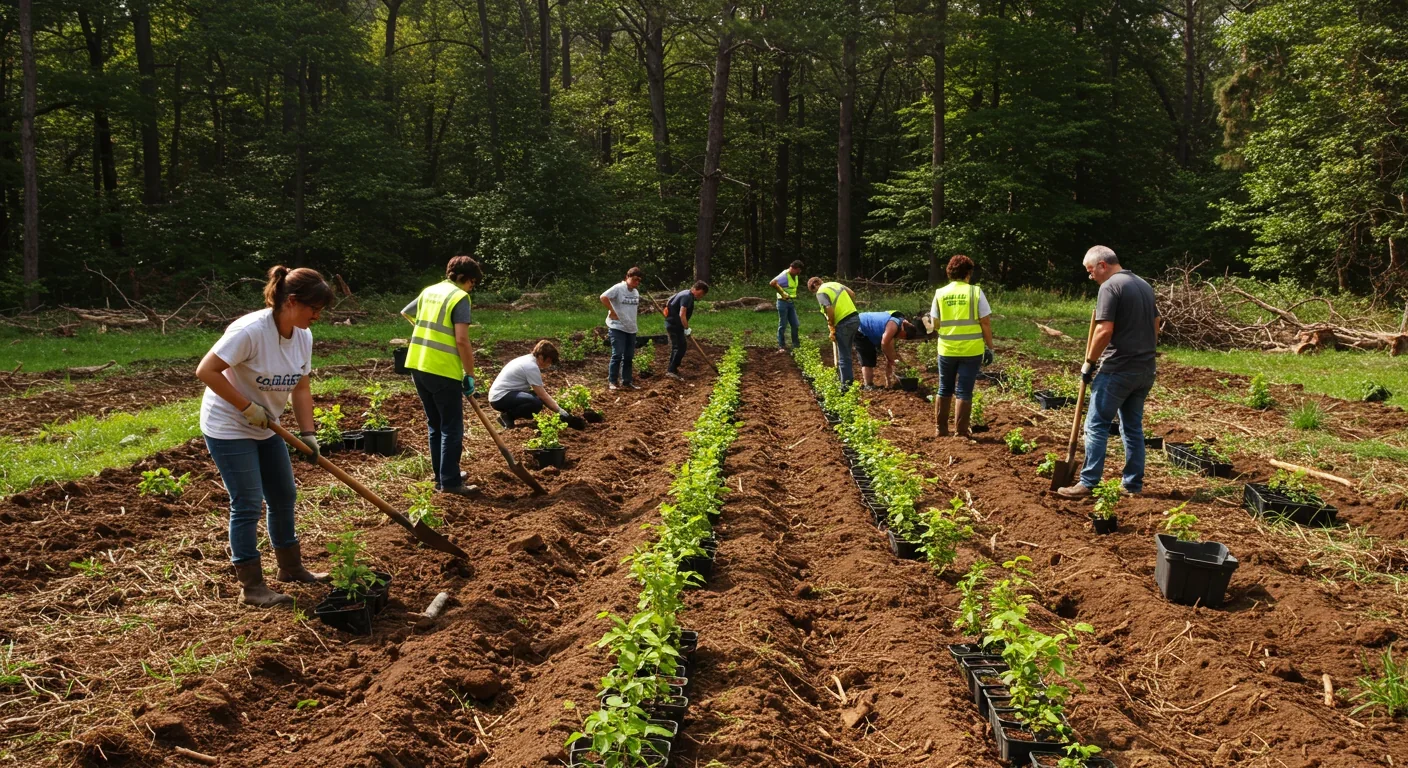Digital Pollution Tax: Can It Save Data Centers?

TL;DR: Earth's 36 biodiversity hotspots cover just 2.4% of land but contain over half the world's endemic species. These vital ecosystems face severe threats but targeted conservation has proven effective—and individual actions from conscious consumption to advocacy can help preserve them.

By 2050, scientists predict we could lose up to a third of Earth's species if current trends continue. But here's the twist: saving most of that biodiversity doesn't require protecting the entire planet. It requires focusing on just 2.4% of it. These areas, called biodiversity hotspots, hold more than half of Earth's endemic plant species and 42% of terrestrial vertebrates. They're the planet's living libraries, storing millions of years of evolutionary innovation in forests, mountains, and coastlines that are disappearing faster than we can study them.
The concept isn't new. British ecologist Norman Myers identified the first ten hotspots in 1988, creating a framework that would transform conservation from a scattered effort into a laser-focused strategy. Today, 36 hotspots span the globe, from Madagascar's lemur forests to the Philippines' coral reefs, representing the most biodiverse and most threatened places on Earth.
Not every forest or reef qualifies as a biodiversity hotspot. The criteria are strict: a region must contain at least 1,500 endemic vascular plant species—plants found nowhere else on Earth—and have lost at least 70% of its original habitat.
That second criterion is crucial. Hotspots aren't just special because they're diverse. They're special because they're in crisis.
Consider Brazil's Atlantic Forest, which once covered an area larger than Western Europe. Today, only 12% remains, yet those fragments still harbor 20,000 plant species, 8,000 of which exist nowhere else. The Atlantic Forest restoration efforts show that even degraded hotspots can recover with sustained effort.
Meanwhile, Madagascar's forests house all 107 species of lemurs on the planet, along with thousands of plant species that evolved in isolation for 88 million years. Lose Madagascar, and you lose an entire branch of the primate family tree.
The numbers are staggering. Hotspots cover just 2.4% of Earth's land surface but contain over 50% of the world's endemic plant species and 42% of terrestrial vertebrate species as endemics. That's millions of species packed into an area smaller than Australia.
What's the point of saving obscure plants and animals most people will never see? The answer goes far beyond aesthetics or ethics. These hotspots provide what economists call "ecosystem services"—benefits that keep human civilization running.
Take pollination. Three-quarters of global food crops depend on animal pollinators, most of which evolved in biodiverse ecosystems. When we lose hotspot habitats, we lose the wild relatives of bees, bats, and birds that agricultural systems depend on.
Or consider medicine. More than 50% of pharmaceutical compounds are derived from or inspired by natural sources. The Madagascar periwinkle, a plant from one of the world's most threatened hotspots, produces compounds used to treat childhood leukemia and Hodgkin's disease. How many undiscovered cures are we bulldozing before we even know they exist?
Then there's climate regulation. Rainforests in biodiversity hotspots store massive amounts of carbon—about 250 billion tons globally. When hotspot forests are cleared, that carbon enters the atmosphere as CO2, accelerating climate change. Protecting hotspots isn't just about saving species. It's about stabilizing the climate system that agriculture and society depend on.
The economic value is measurable, though often underestimated. The Critical Ecosystem Partnership Fund estimates that hotspot conservation generates economic returns worth billions in avoided costs—from flood control to water purification to crop pollination—that would otherwise require expensive technological substitutes.

The threats to biodiversity hotspots read like a catalog of modern civilization's worst habits: deforestation, agricultural expansion, urbanization, mining, climate change, invasive species, and overexploitation.
Deforestation leads the pack. In Southeast Asia's Sundaland hotspot, palm oil plantations have replaced millions of hectares of rainforest, driving orangutans and Sumatran tigers toward extinction. The economic incentive is powerful: palm oil is in everything from cookies to cosmetics, and it's more profitable per hectare than conservation.
Agricultural expansion follows close behind. As global population approaches 10 billion, the pressure to convert "unproductive" wildlands into farms intensifies. The problem is that hotspot soils are often poor—the nutrients are locked up in the living biomass, not the soil. Once cleared, these lands may produce crops for a few years before becoming degraded and abandoned, leaving neither forest nor productive farmland.
Climate change adds a cruel twist. Even protected hotspots face rising temperatures and shifting rainfall patterns that their species can't adapt to quickly enough. In mountain hotspots like the Tropical Andes, species adapted to cool high-altitude conditions are literally running out of mountain as temperatures rise. Where do they go when they're already at the peak?
Invasive species compound the problem. Islands in hotspots like the Caribbean or Philippines are especially vulnerable. A single introduced predator—rats, cats, mongooses—can devastate populations of birds and reptiles that evolved without defenses against mammalian predators.
Norman Myers predicted that up to 150,000 species could be lost each year due to deforestation. While that number remains debated, the trend is undeniable: we're in the midst of Earth's sixth mass extinction, and hotspots are ground zero.
The situation isn't hopeless. In fact, targeted conservation in hotspots has produced remarkable successes, proving that decline can be reversed when resources and political will align.
The Atlantic Forest in Brazil offers a compelling case study. After losing 88% of its original extent, conservation organizations partnered with local communities and government agencies to create protected corridors and restore degraded lands. Organizations like REGUA have protected thousands of hectares and reintroduced locally extinct species. The forest is growing again, and species once thought doomed are rebounding.
Costa Rica's success is even more dramatic. In the 1980s, deforestation had claimed more than 80% of the country's forests. Today, forest cover has rebounded to over 50% through a combination of protected areas, payments for ecosystem services, and ecotourism that makes living forests more valuable than cleared land. The country now derives significant revenue from tourists who come to see quetzals, sloths, and poison dart frogs in their natural habitats.
The Cape Floristic Region in South Africa has seen similar progress. Despite being one of the world's most threatened hotspots, coordinated conservation efforts have protected critical habitats for thousands of plant species found nowhere else, including the proteas that have become symbols of South African biodiversity.
These successes share common elements: strong legal frameworks, adequate funding, local community involvement, and economic alternatives to destructive practices. They prove that conservation can compete with development when society decides to make it a priority.
Conservation International's Hotspots Program, the World Bank's Critical Ecosystem Partnership Fund, and the Global Environment Facility's Biodiversity Investment Portfolio have collectively invested over $1 billion in hotspot conservation, protecting millions of hectares and countless species.

It's easy to assume that saving biodiversity hotspots is a job for governments, NGOs, and billionaire philanthropists. But individual choices accumulate into collective impact, and there are more ways to help than you might think.
Start with consumption. Many products that drive hotspot destruction—palm oil, beef from cleared rainforest, illegally logged timber—can be replaced with sustainable alternatives. Apps and certification labels can help you identify products that don't contribute to habitat loss. When consumers shift purchasing patterns, entire supply chains respond.
Support matters too. Conservation organizations working directly in hotspots depend on donations to fund land purchases, ranger patrols, and community programs. Even small recurring contributions add up. Organizations like the World Land Trust allow donors to directly fund the purchase and protection of specific parcels of threatened habitat.
Reduce your carbon footprint. Because climate change threatens even protected hotspots, actions that reduce greenhouse gas emissions—using public transit, eating less meat, choosing renewable energy—indirectly benefit biodiversity worldwide. It's not just about polar bears anymore. It's about whether cloud forest species in the Andes have a survivable climate.
Plant native species. While you probably don't live in a hotspot, supporting local biodiversity helps maintain ecological networks that migrating species depend on. Native plants support native insects, which support native birds. It's all connected.
Educate and advocate. Talk about biodiversity with friends and family. Contact elected officials about conservation funding and policies. Support political candidates who take biodiversity seriously. Public pressure shapes priorities, and conservation competes with countless other demands for resources and attention.
Visit responsibly. Ecotourism, done right, makes biodiversity economically valuable to local communities. When tourists pay to see lemurs in Madagascar or macaws in Peru, locals gain incentives to protect habitats rather than convert them. But choose operators who genuinely support conservation, employ locals, and minimize environmental impact.
Human civilization stands at a choice point. We can continue treating the planet as an infinite resource warehouse, extracting until ecosystems collapse and taking most biodiversity with them. Or we can recognize that our prosperity depends on the ecological systems we've inherited and act to preserve them.
The hotspot framework shows us that we don't have to choose between human development and nature. We just need to be strategic. Protecting 2.4% of Earth's land area with exceptional effectiveness could prevent the majority of predicted extinctions. That's achievable. It's not even that expensive compared to military budgets or agricultural subsidies.
What makes this moment different from previous environmental crises is that we understand what's happening while there's still time to change course. The biodiversity hotspot concept provides a clear priority list, scientific consensus supports action, and proven conservation strategies exist. What's missing is sufficient political will and resource allocation.
But political will is downstream of public awareness. When enough people understand what's at stake and demand action, policy follows. That's how previous environmental movements succeeded, from cleaning up air and water pollution to protecting endangered species and establishing national parks.
The living libraries of Earth's biodiversity hotspots contain knowledge accumulated over millions of years—solutions to problems we haven't encountered yet, sources of future medicines, insights into how life adapts and thrives. Once lost, that knowledge is irretrievable. No amount of technology can resurrect extinct species or restore the ecological relationships that took eons to evolve.
Every individual action matters because collective behavior shapes markets, influences policies, and determines which possible futures become real. The question isn't whether one person can save biodiversity hotspots. It's whether enough people, acting together with intention, can shift the trajectory before irreversible tipping points are crossed.
The hotspots are still there, still biodiverse, still salvageable. But the window is closing. What we do in the next decade will likely determine whether Earth's living libraries remain open for future generations or become monuments to what we failed to protect when we had the chance.
The choice, as always, is ours to make.

Recent breakthroughs in fusion technology—including 351,000-gauss magnetic fields, AI-driven plasma diagnostics, and net energy gain at the National Ignition Facility—are transforming fusion propulsion from science fiction to engineering frontier. Scientists now have a realistic pathway to accelerate spacecraft to 10% of light speed, enabling a 43-year journey to Alpha Centauri. While challenges remain in miniaturization, neutron management, and sustained operation, the physics barriers have ...

Epigenetic clocks measure DNA methylation patterns to calculate biological age, which predicts disease risk up to 30 years before symptoms appear. Landmark studies show that accelerated epigenetic aging forecasts cardiovascular disease, diabetes, and neurodegeneration with remarkable accuracy. Lifestyle interventions—Mediterranean diet, structured exercise, quality sleep, stress management—can measurably reverse biological aging, reducing epigenetic age by 1-2 years within months. Commercial ...

Data centers consumed 415 terawatt-hours of electricity in 2024 and will nearly double that by 2030, driven by AI's insatiable energy appetite. Despite tech giants' renewable pledges, actual emissions are up to 662% higher than reported due to accounting loopholes. A digital pollution tax—similar to Europe's carbon border tariff—could finally force the industry to invest in efficiency technologies like liquid cooling, waste heat recovery, and time-matched renewable power, transforming volunta...

Humans are hardwired to see invisible agents—gods, ghosts, conspiracies—thanks to the Hyperactive Agency Detection Device (HADD), an evolutionary survival mechanism that favored false alarms over fatal misses. This cognitive bias, rooted in brain regions like the temporoparietal junction and medial prefrontal cortex, generates religious beliefs, animistic worldviews, and conspiracy theories across all cultures. Understanding HADD doesn't eliminate belief, but it helps us recognize when our pa...

The bombardier beetle has perfected a chemical defense system that human engineers are still trying to replicate: a two-chamber micro-combustion engine that mixes hydroquinone and hydrogen peroxide to create explosive 100°C sprays at up to 500 pulses per second, aimed with 270-degree precision. This tiny insect's biochemical marvel is inspiring revolutionary technologies in aerospace propulsion, pharmaceutical delivery, and fire suppression. By 2030, beetle-inspired systems could position sat...

The U.S. faces a catastrophic care worker shortage driven by poverty-level wages, overwhelming burnout, and systemic undervaluation. With 99% of nursing homes hiring and 9.7 million openings projected by 2034, the crisis threatens patient safety, family stability, and economic productivity. Evidence-based solutions—wage reforms, streamlined training, technology integration, and policy enforcement—exist and work, but require sustained political will and cultural recognition that caregiving is ...

Every major AI model was trained on copyrighted text scraped without permission, triggering billion-dollar lawsuits and forcing a reckoning between innovation and creator rights. The future depends on finding balance between transformative AI development and fair compensation for the people whose work fuels it.